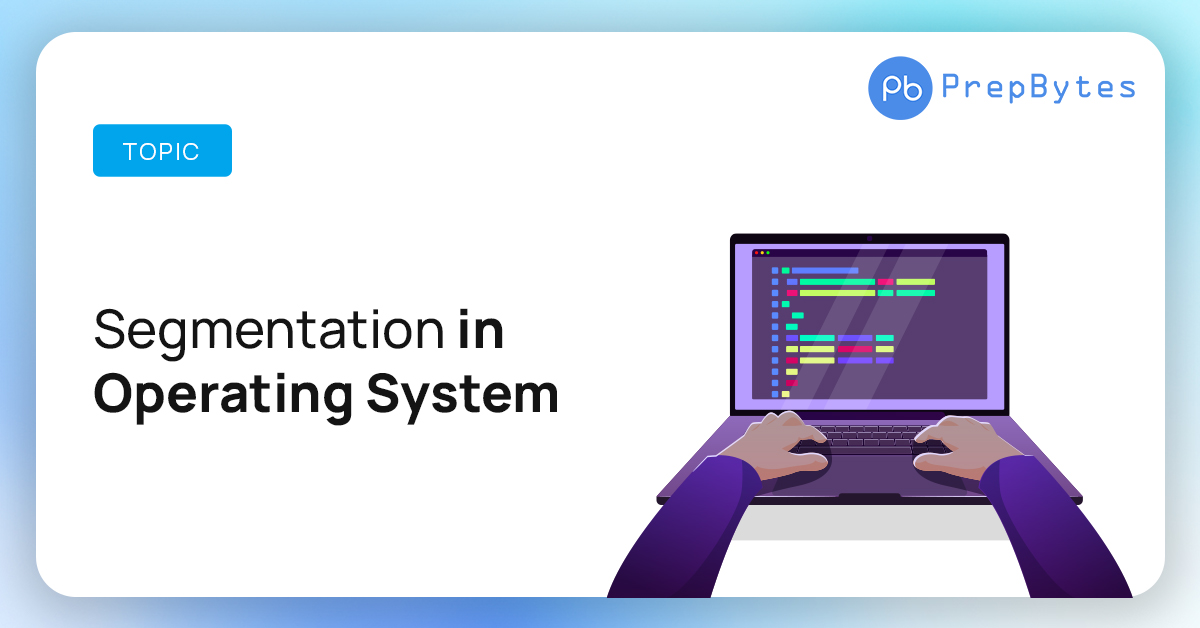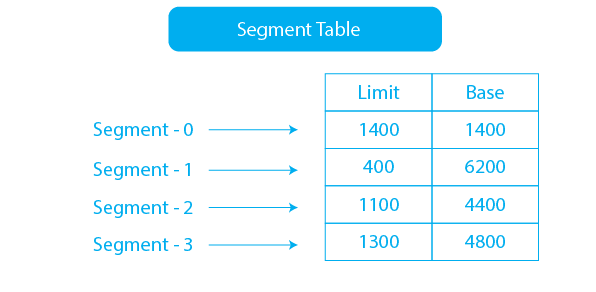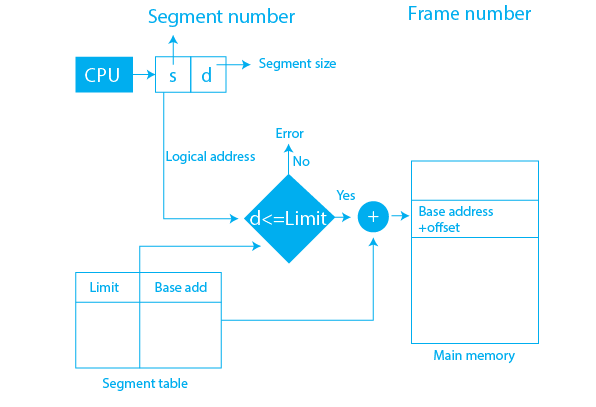Operating systems implement diverse memory management techniques to optimize computer performance. One of these strategies is segmentation in the operating system, which entails partitioning memory into manageable sections. This article seeks to offer a comprehensive exploration of the segmentation mechanism utilized by operating systems and its influence on the efficiency of computer operations.
In the realm of operating systems, segmentation involves the arrangement of data objects into segments, which are fixed-sized chunks located within the process or user-accessible area of the storage device. This memory management technique holds a pivotal role in the allocation and control of a computer’s virtual address space. It enables computers to effectively monitor the projects or processes they are currently managing. Through the implementation of segmentation, distinct kernel components can function in isolated address regions, contributing to heightened system stability and overall performance.
What is Segmentation in OS?
The virtual address space of an application is divided into chunks using a memory management technique called segmentation.
By breaking up the memory into manageable chunks, the operating system may be able to keep track of which memory space is being used and which is free. The operating system is able to allocate and deallocate memory much more quickly and easily as a result. The segments are of various sizes and are not aligned continuously. Since it makes use of a non-contiguous memory allocation mechanism, internal fragmentation is prevented. The segment’s length in a user programme is decided by the segment’s function.
Why Segmentation is Required?
The drawbacks associated with the paging method prompted the development of segmentation as an alternative memory management approach. Unlike paging, which divides code or functions into pages without considering the potential for further division within related code sections, segmentation addresses the need for a more efficient organization of code.
In the paging method, multiple pages need to be loaded into frames for the execution of associated code, resulting in increased memory requirements. This additional loading of pages into main memory poses a challenge. To overcome this limitation, segmentation was introduced, allowing for the merging of similar code into a single block.
Another significant drawback of traditional memory management strategies is the disparity between the user’s perception of physical memory and the actual view of physical memory. However, segmentation helps overcome this issue by breaking down the user’s software into segments based on specific needs. This enables more effective problem-solving and resource allocation within the memory space.
By adopting a segmented approach, operating systems can enhance memory management by providing a more intuitive and efficient allocation of code segments. This facilitates improved system performance and the optimized utilization of available memory resources.
In the subsequent sections of this article, we will delve deeper into the principles and mechanisms of segmentation, highlighting its advantages over other memory management strategies. Understanding segmentation as a memory management technique will provide valuable insights into enhancing the performance and efficiency of operating systems.
Segment Table and its Uses
A segment table is used to store the data for each process segment. A segment table is utilized, as is common knowledge, to convert a logical address generated by the CPU into a physical address. A two-dimensional logical address is converted into a one-dimensional physical address using the segment table.
There are two parts to the segment table:
- Segment Base: The segment base is also known as a segment’s base address. The segment base contains the starting physical addresses of the memory segments.
- Segment Limit: Segment limit is also known as segment offset. It contains the exact length of the segment.
Below is a basic illustration of the segment table.
- STBR: Segment Table Base Register is referred to as STBR. The segment table’s base address is kept in the STBR.
- STLR: Segment Table Length Register is referred to as STLR. The amount of segments a program uses is stored in STLR.
NOTE: The segment table itself is retained as a separate segment in the main memory. The segment table may occasionally consume a significant amount of memory if there are many segments.
Types of Segmentation
Segmentation can be divided into two types:
1. Virtual Memory Segmentation:
Virtual memory segmentation divides each process into n sections. The portions aren’t all cut off at once. Virtual memory segmentation may or may not be used throughout a program’s execution.
2. Simple Segmentation:
Simple Segmentation divides the procedures into n sections even if the segmentation is finished all at once. Simple segmentation takes place when a programme is running. Due to simple segmentation’s tendency to scatter the segments into the memory (in a noncontinuous manner), one step of the process could be situated in a different location than another.
Characteristics of Segmentation
Some of the characteristics of segmentation are discussed below:
- Segmentation divides the programme into segments of varied lengths.
- The kind and size of modules affect partition size.
- The goal of segmentation is to group together related data in a single segment.
- The continual storing of memory segments depends on the segmentation strategy chosen.
- The operating system maintains a segment table for each process.
Advantages of using Segmentation Technique
Some of the Advantages of segmentation technique are as follows:
- It can improve the performance of the system by allowing different kernel components to run on several processor cores.
- It can also improve the responsiveness of the system by allowing multiple threads to run concurrently.
- better CPU usage
- Give internal fragmentation a cure.
- Records for segments are tracked in the segment table. Also used is the RAM required to store this segment table.
- Security protocols and data can be kept apart.
- Physical memory is perceived by the user in a way that is somewhat similar to segmentation. Through segmentation, users can break down user programmes into modules. These modules are merely the codes for the various procedures.
- The user chooses the segment size as opposed to paging, when the hardware controls the page size.
Disadvantages of using Segmentation Technique
- The cost of system performance might increase. This is required in order for the kernel to continue allocating new memory for the segment while it is active.
- The system may require more resources to manage segmentation compared to employing a more straightforward memory management technique.
- Its exterior is broken up.
- retaining a segment table for each step costs money.
- Access time to obtain the instruction increases because two memory trips are now required—one for the segment table and the other for main memory.
- Switching cannot be done with segments of various sizes.
How Does Segmentation Work?
Data is divided into manageable parts using the memory management method known as segmentation. The system initially looks for the segment that holds the data when you wish to store or read it.
The concept of segmentation in memory management shares similarities with paging, but it differs in the way it divides processes. Instead of dividing them into pages, segmentation divides processes into larger units called segments or modules. These segments are assigned logical addresses generated by the CPU, while the actual data resides in secondary memory. To access this data, the CPU must utilize the main memory, requiring address translation to convert logical addresses to physical addresses.
In order to perform address translation, the CPU relies on a data structure called a segment table. This table serves as a record of all the segments associated with a process. By consulting the segment table, the CPU can translate a logical address into its corresponding physical address. The segment table contains two types of information: the base address and the limit of each segment.
The base address indicates the starting point of a segment in the main memory, while the limit specifies the size or length of the segment. With this information, the CPU can accurately determine the physical address associated with a given logical address, enabling proper data retrieval and manipulation.
By utilizing segmentation, operating systems can effectively manage memory, providing a logical address space that simplifies memory allocation and access. In the subsequent sections of this article, we will delve deeper into the details of segmentation, including its implementation, advantages, and challenges. A comprehensive understanding of segmentation as a memory management technique will aid in optimizing system performance and ensuring efficient memory utilization.
- Limit: Actual size of a segment.
- Base Address: the address of the segment in the main memory.
If the value of the offset(d) equals the Limit, then. Only the CPU will then be able to read that section otherwise, an error will occur. The size of the segment that the CPU wishes to read is shown by offset(d).
Segmentation Example
Let’s say the CPU desires access to section 3. The segment number and size of the segment it wishes to read are specified in a logical address that is generated by the program (as illustrated below). The intended section size is 300. This indicates that segment 3’s 300 instructions will be read by the CPU. The CPU learns that the base address is 2500 after reading the segment table. However, the portion is 200 instructions long. Offset(d)>Limit in this case. So an error will result from this.
Conclusion
In conclusion, segmentation in operating systems is a fundamental memory management technique that organizes data objects into segments, creating fixed-sized chunks within the computer’s storage. This approach is vital for effectively allocating and controlling a computer’s virtual address space. By allowing distinct kernel components to operate in separate address regions, segmentation enhances system stability and overall performance. Understanding the intricacies of segmentation is essential for grasping how operating systems efficiently manage memory, facilitating the seamless execution of diverse processes and projects.
Throughout this article, we have explored the fundamental concepts of segmentation, including its role in addressing the limitations of other approaches such as paging. Segmentation allows for the efficient organization of code and data into logical units, enabling modular programming, code reuse, and data sharing among processes.
One of the key advantages of segmentation is its ability to provide memory protection and isolation. By assigning access rights and permissions to different segments, segmentation ensures data integrity and prevents unauthorized access, enhancing system security.
FAQs related to Segmentation in OS
Below are some of the FAQs related to Segmentation in operating systems:
Q1: What is the primary purpose of segmentation in operating systems?
The primary purpose of segmentation in operating systems is to organize data objects into segments, which are fixed-sized chunks, and to efficiently manage the allocation of a computer’s virtual address space.
Q2: How does segmentation contribute to system stability and performance?
Segmentation enhances system stability and performance by allowing different kernel components to operate in separate address regions. This isolation prevents interference between components and promotes efficient resource utilization.
Q3: Can segmentation be used in combination with other memory management techniques?
Yes, segmentation can be used in combination with other memory management techniques, such as paging, to create hybrid approaches that leverage the strengths of each technique for optimal performance.
Q4: What are the challenges or drawbacks associated with segmentation in operating systems?
One challenge with segmentation is external fragmentation, where free memory becomes scattered in small chunks. This can lead to inefficient memory utilization. Techniques like compaction or dynamic segmentation aim to address such issues.
Q5: How does segmentation help in managing virtual address space for processes?
Segmentation assists in managing virtual address space by allocating specific segments for different aspects of a process. This helps in organizing and tracking the data related to the ongoing projects or processes.
Q6: Are there real-world examples where segmentation is prominently used in operating systems?
Yes, segmentation is prominently used in various operating systems. For instance, the Intel x86 architecture incorporates segmentation in its memory management unit to facilitate the organization and protection of different segments of a program.
Q7: Can segmentation impact the security of an operating system?
Yes, segmentation can contribute to enhancing the security of an operating system by allowing for the isolation of different segments. This isolation helps in preventing unauthorized access or interference between distinct components or processes.








